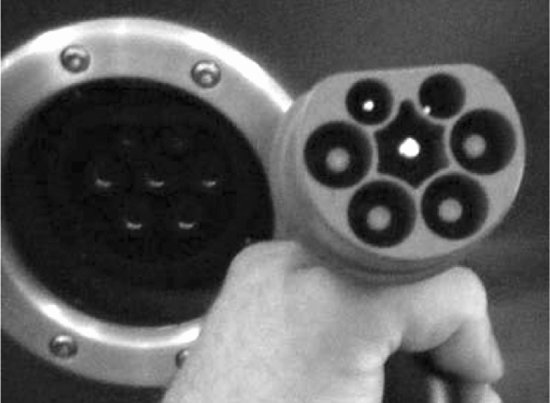16
Electric Vehicle Charging
16.1 Charging Standards Overview
Until 2010, the standardization of EV charging addressed only very basic aspects, such as how the vehicle should behave when it detects charging power or go back to sleeping mode when the charging power disappeared (IEC 61 681:2001). The plugs themselves conformed to national standards (SAE J1772 shown in Figure 16.3, VDE-AR-E 2623-2-2/Mennekes shown in Figure 16.1, JARI/TEPCO), or to IEC industrial connector specifications: IEC 62 196-1, single phase, for the US and Japan, and IEC 62 196-2 or 62 196-3 (or 60309, see Figure 16.2) for Europe and China.
However, the standardization efforts for EV charging have intensified since 2008, and address mainly the following domains:
Figure 16.1 Mennekes EV plug (IEC 62196 v2 candidate).1

- The definition of a physical connector. On the EV side, the US and Japan have converged to the J1772 2010 plug (EV plug), which is now used by automakers Chrysler, Ford, GM, Honda, Mitsubishi, Renault-Nissan (Figure 16.5), Tesla, Toyota. Virtually all vehicles in production or planned in 2011 will use this plug. The J1772 plug is suitable only for single-phase charging. In Europe in the beginning of March 2011 there was still some debate between a EV plug format proposed by German manufacturer Mennekes, and a format proposed by Italian manufacturer Scame. The additional complexity comes from ...

